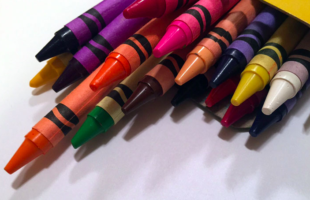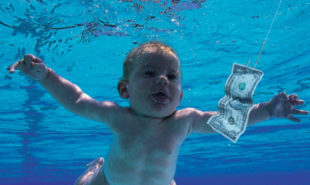My team and I were sitting at the pub, rethinking an approach to a client’s customer-rewards program. So, we looked at a seminal study in the Journal of Personality and Social Psychology. It validated our counterintuitive notion of loyalty and compensation. And, ah, inspired another round as we brainstormed with crayons on our paper placemats.
 The study involved an art teacher who wanted to encourage her students to spend more time practicing their drawing. So, she created a loyalty program — a “Good Drawing Certificate” — to reward her students. A big announcement was made and posters were placed in the classroom about the program. The students were divided into 3 groups:
The study involved an art teacher who wanted to encourage her students to spend more time practicing their drawing. So, she created a loyalty program — a “Good Drawing Certificate” — to reward her students. A big announcement was made and posters were placed in the classroom about the program. The students were divided into 3 groups:
Group 1, the Expected group: Children were shown the “Good Drawing Certificate” and asked if they wanted to draw in order to get the certificate. After Group 1 finished their drawing, they received their (expected) certificates.
Group 2, the Unexpected group: Children were asked if they wanted to draw, but there was no mention of the certificate. After Group 2 children spent time drawing, they received an (unexpected) drawing certificate.
Group 3, the Control group. Researchers asked the children if they wanted to draw, but didn’t mention a certificate and didn’t give them one.
 Here’s what happened (2 wks later):
Here’s what happened (2 wks later):
During playtime, drawing tools were put out in the room. The children weren’t asked anything about drawing, the tools were just put in the room and available.
Children in Groups 2 and 3, the unexpected and control groups, spent the most time drawing.
Children in Group 1, the ones who had received an expected reward, spent the least time drawing.
When the researchers did more studies like this, with adults as well as children, the results were similar.
Conclusion: “Contingent” rewards, based on specific behavior spelled out in advance, resulted in less of the desired behavior. Rewarding customers (and employees) unexpectedly will drive even greater results. It puts emphasis on the user experience — and relevance — not on the purchase and a pre-determined push for Loyalty. Does this mean “frequent-purchase” awards aren’t effective? Not necessarily. That can depend on what’s expected, what’s not expected, and the customer experience before the “frequency” card is punched in for credit.
This has put a laser-pointed focus on our creative thinking, which will result (I’m confident) in better ideas and greater sales results for the client. What do you think about your approach to loyalty programs? And to brainstorming at pubs? Cheers!
(See related posts: the shifts in focus from Purchaser to User and from Loyalty to Relevance)
If you got something out of this, let us know by liking it, and commenting. Go ahead and share it! Thanks.
Source: Lepper, M., Greene, D., & Nisbett, R. Undermining children’s intrinsic interest with extrinsic rewards. Journal of Personality and Social Psychology, 28, 129-137.
